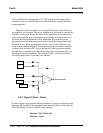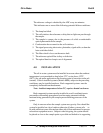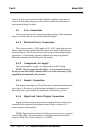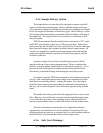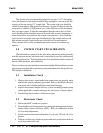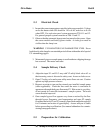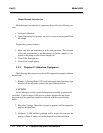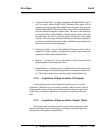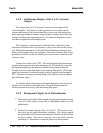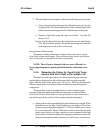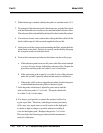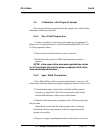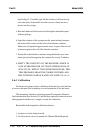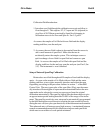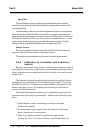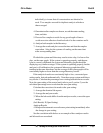
1-26 Part III
Part III Model 6600
Teledyne Analytical Instruments
5.5.4 Oscilloscope Display of the I to E Converter
Output.
The output of the I to E Converter is observed at the output of the
second amplifier. The objective of this operation is to set up the optical
system and the gain of the second amplifier in such a way that the analyzer
keeps operating within its dynamic range, despite variations in turbidity and
changes in background component levels. It is therefore important to mea-
sure these components in the sample water.
The “reference” medium against which this data is obtained is either
deionized or distilled water, city tapwater, or pure ocean water in the sample
cell. While the transmittance of the cell filled with different references may
differ, for this purpose these are negligible. Choose the reference that is most
abundantly available on the site, usually tap or ocean water, and use it as the
reference water.
Connect an oscilloscope to TP2. The oscilloscope displays the measur-
ing and reference pulses in an alternating pattern. The display is created by
the light passing through the reference and measuring filters as they are
brought in and out of the light beam by the rotating filter wheel. These light
pulses are converted to electronic energy which is amplified and brought to
TP2. The base line represents the blocking of the light beam by the opaque
part of the filter wheel.
To identify which of the pulses is the measuring peak, insert a piece of
flat glass or clear plastic in the light beam. The peak that becomes the
shortest (retracts excessively) is the measuring filter pulse.
5.5.5 Background Signal Level Determination
1. Draw representative Zero fluid a sample from the grab sample port using
valve V3 of the sample system into a clean(Hydrocarbon free) one
gallon bottle.
2. Collect the sample through filters F1 and F2. This removes non-
dissolved oils and solid particulates (turbidity). The filtered sample
through both F1 and F2 removes both non-dissolved dissolved oils from
the process fluid. The water is now free of oil and solids, and any
remaining UV absorbance is caused by the non-oil background.



